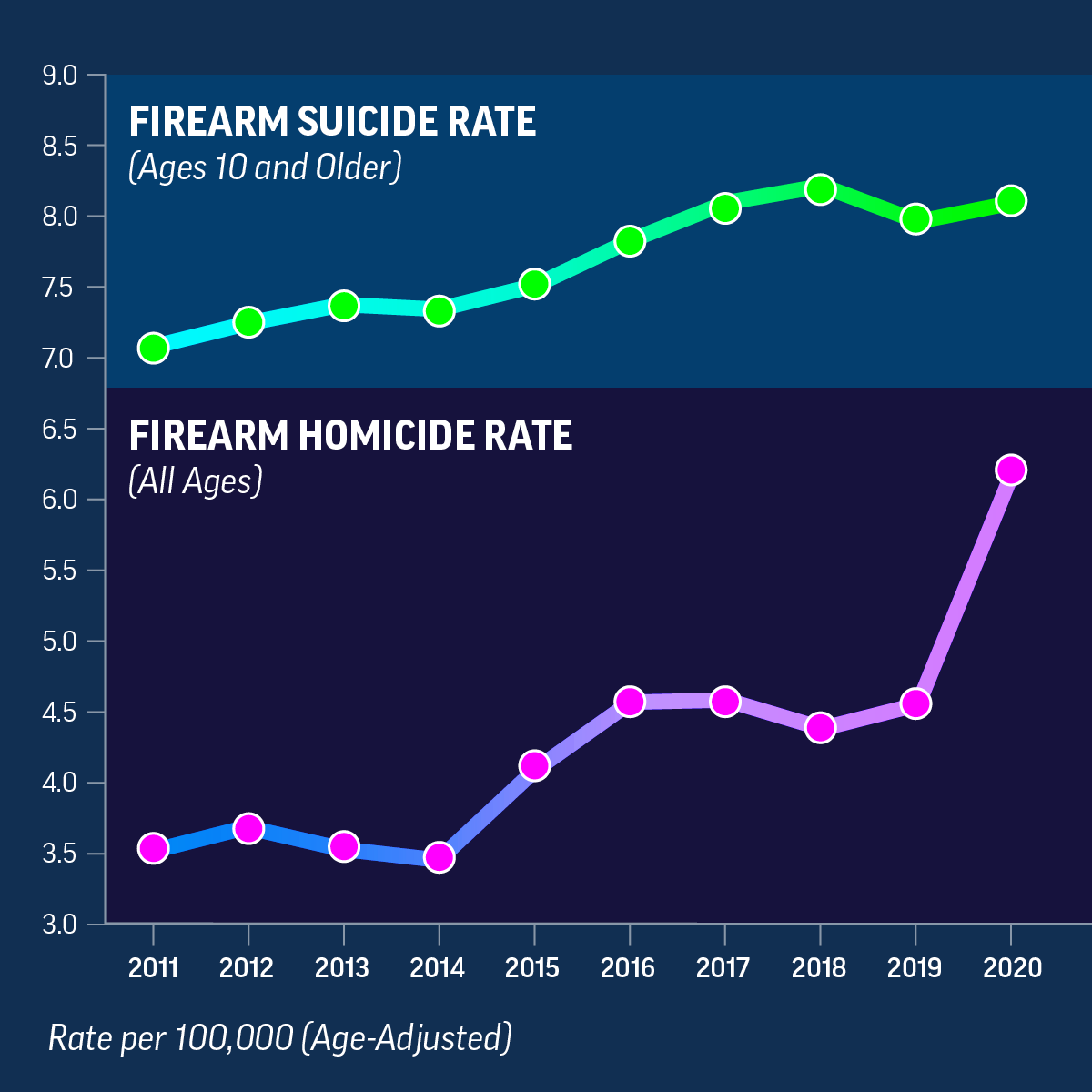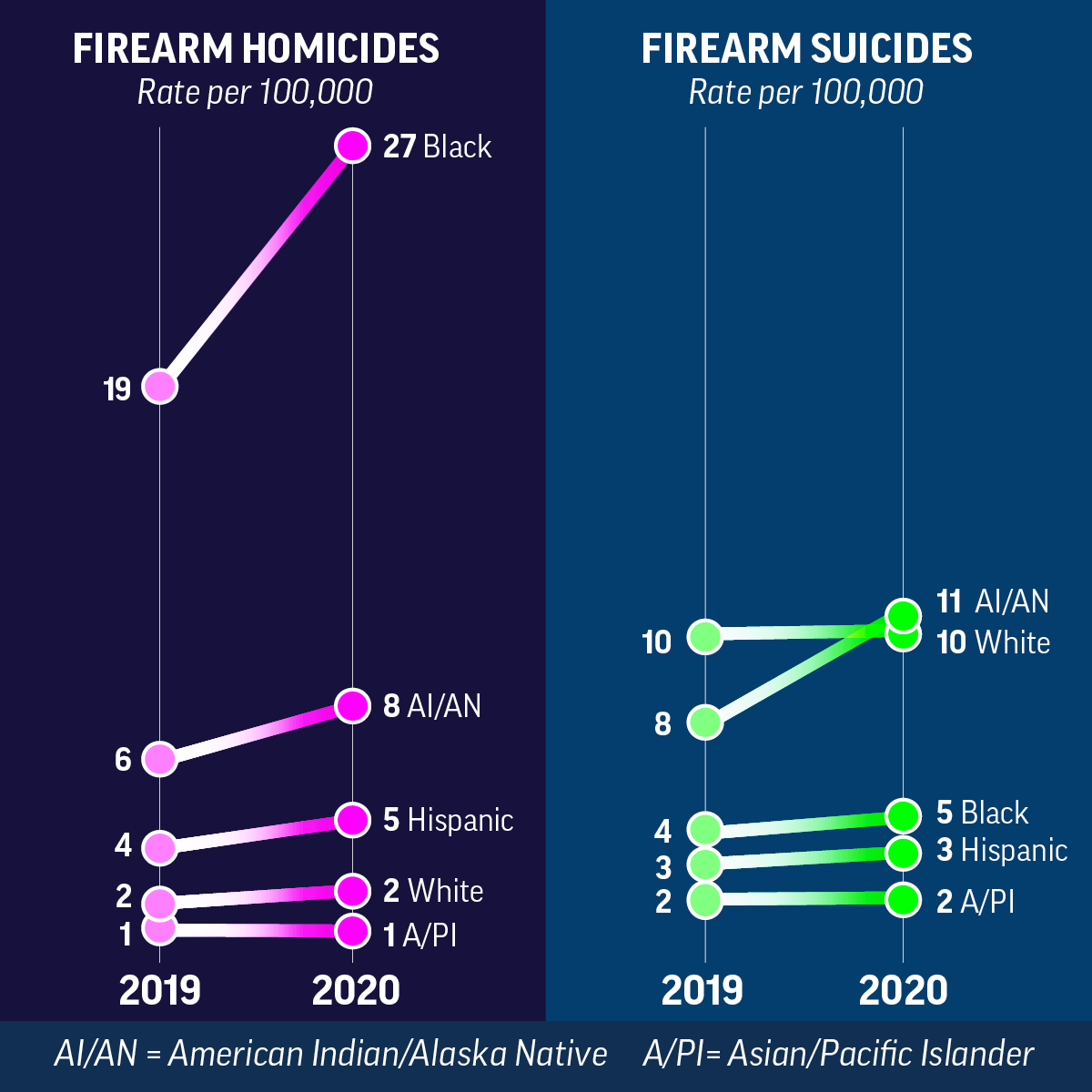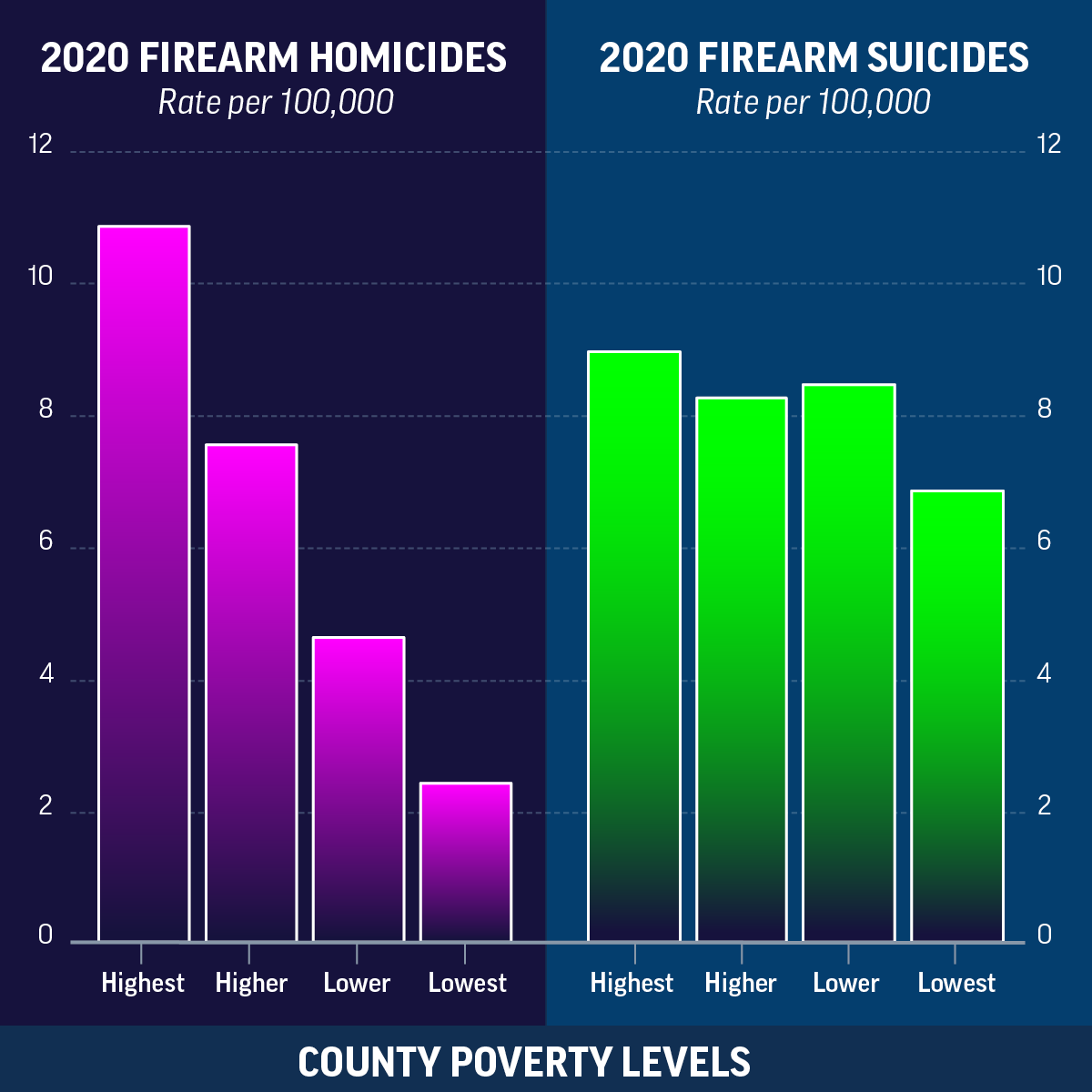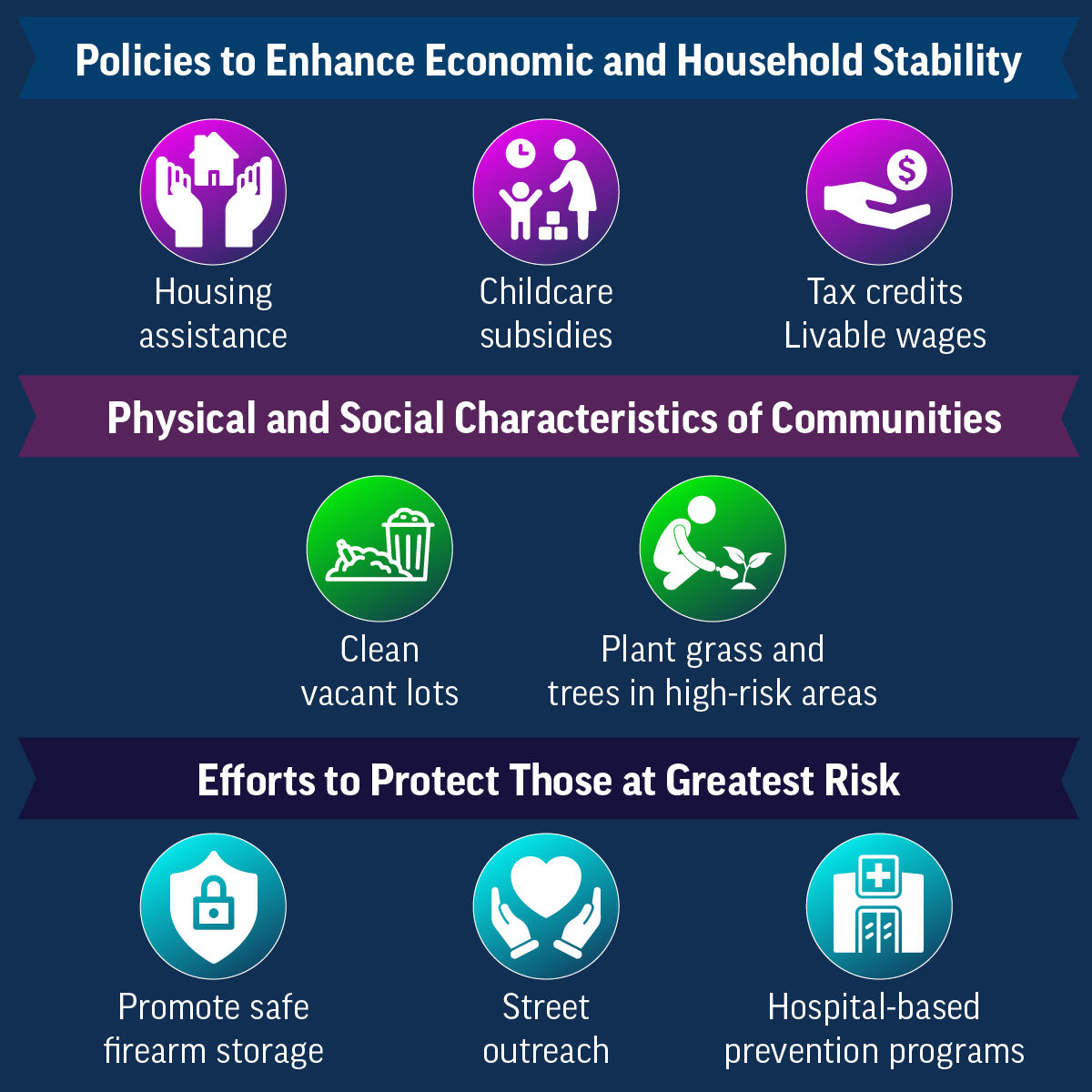Challenges
- Ripple effects: Firearm homicide and suicide can have a ripple effect in communities—reaching beyond the people immediately impacted by the deaths and affecting friends, families, and coworkers.
- High risk for death: Firearms can lead to deadly injuries and are often used in homicides and suicides.
- Growing racial and ethnic gaps: The COVID-19 pandemic may have worsened existing social and economic stressors that increase the risk for firearm homicide and suicide, particularly among racial/ethnic minority communities.
- Poverty effects: Counties with higher poverty rates had higher firearm homicide rates. People living in these areas experienced higher increases than those living in counties with the lowest poverty rates. Higher county poverty levels were also associated with higher firearm suicide rates.
- Multiple stressors: Multiple factors, including social, economic, and physical conditions in communities, contribute to firearm homicide and suicide risk, as well as racial and ethnic inequities.
- Preventive actions urgently needed: The increases in firearm deaths and widening disparities have heightened the need for comprehensive preventive actions. Programs, policies, and practices can have immediate and lasting benefits.
Firearm Homicides Rose Sharply, and Firearm Suicides Remained High
From 2019 to 2020, the firearm homicide rate increased about 35%, while the firearm suicide rate remained high.
Firearm Homicides and Suicides Increased for Some Racial/Ethnic Groups
The firearm homicide rate increased most for Black people, and the suicide rate increased most for American Indian/Alaska Native people.
Conditions of Poverty Are Associated with Firearm Deaths
In 2020, counties with the highest poverty level had firearm homicide rates 4.5 times as high and firearm suicide rates 1.3 times as high as counties with the lowest poverty level.
Comprehensive Actions with Approaches that Work
Strategies are needed to address physical, social, economic, and structural conditions known to increase firearm homicide and suicide risks.
To Stop Violence Now and in the Future
Firearm deaths are preventable—not inevitable—and everyone has a role to play in prevention. Resources like CDC’s violence prevention technical packages and surveillance systems can help leaders choose proven programs to make their communities healthier and safer.
Health disparities: Preventable differences in the burden of disease, injury, violence, or opportunities to achieve optimal health that are experienced by populations that have been socially, economically, geographically, and environmentally disadvantaged.1
Health inequities: Particular types of health disparities that stem from unfair and unjust systems, policies, and practices and limit access to the opportunities and resources needed to live the healthiest life possible.2
1 Office of Disease Prevention and Health Promotion. (2021, August 11). Healthy People 2020: Disparities. U.S. Department of Health and Human Services. Retrieved August 13, 2021, from https://www.healthypeople.gov/2020/about/foundation-health-measures/Disparities
2 Braveman, P., Arkin, E., Orleans, T., Proctor, D., & Plough A. (2017, May 17). What Is health equity? And what difference does a definition make? Robert Wood Johnson Foundation. https://www.rwjf.org/en/library/research/2017/05/what-is-health-equity-.html
Get email updates about Vital Signs
VITAL SIGNS RESOURCES









